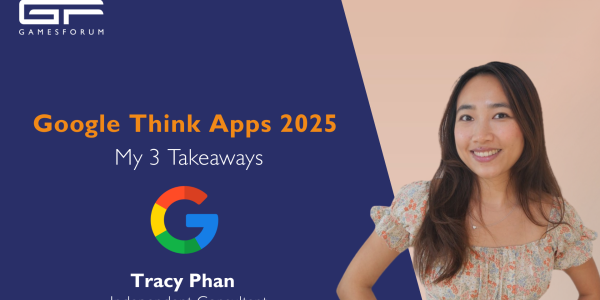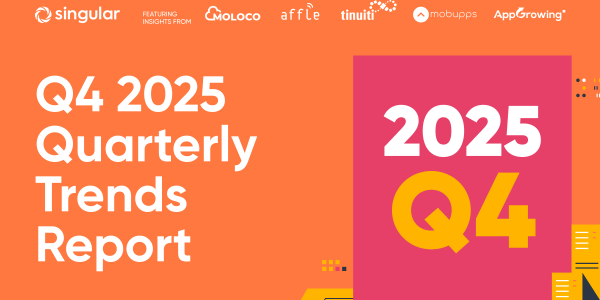From BoomBit to AppLifters: How Gonçalo Martins Turned 300+ Apps of Data Into a Monetization Playbook

Gonçalo Martins - former head of user acquisition at BoomBit and now leading AppLifters’ AI-driven growth platform, breaks down the real levers behind scaling mobile games across 150+ markets and multiple stores. Drawing on five years of data from more than 300 apps, he reveals the cross-promo signals that protect high-value users, the surprising strength of Amazon’s ecosystem, and why in-game ads may become the format that reshapes the next three years of mobile monetization.
AppLifters platform automates UA and monetization decisions - how do you ensure its AI-driven optimizations across your own game portfolio is the best decision for your clients?
Applifters is a powerful growth engine built and refined using data from more than 300 mobile apps across a wide range of genres and markets. Over the past five years, it has encountered diverse challenges and we perfected the engine with those use cases. This experience has shaped a robust and “battle-tested” decision framework capable of adapting to virtually any user acquisition scenario.
What truly sets Applifters apart is the way it blends data-driven automation with human decision-making. The system continuously analyzes campaign performance, identifies optimization opportunities, and provides actionable recommendations based on proven patterns and learnings collected over years of testing. However, the final decisions always remain in the hands of the UA manager. Applifters serves as a strategic partner - guiding, validating, and supporting managers to make faster, smarter, and more confident choices that ultimately drive sustainable growth.
BoomBit runs a powerful cross-promo network between its titles - what data signals do you monitor to prevent high-value users from being shifted away from profitable games?
That’s a great question. Our main guideline is to prevent the cross-promotion network from displaying ads during a player’s first game sessions or the initial impressions of each session. We primarily focus on the No-Fill, Pre-Fill, and the lower eCPM segments - around 10 to 15% of the curve. Our approach avoids disrupting high eCPM users while ensuring that every user is monetized through either external ad networks or our own cross-promotion system.
You’ve seen success beyond iOS and Google Play, including the Amazon Appstore. What unique monetization behaviors or ad performance patterns have you observed in those ecosystems?
Users from this platform tend to be of higher quality, as they are significantly more engaged with the games compared to typical app store users. It operates within a unique ecosystem where only users with Amazon devices can access these games, creating a sense of trust and loyalty that leads to longer playtime. However, ad eCPMs are considerably lower due to limited competition in the ad auctions, so maintaining a healthy balance between ad consumption and eCPM levels is essential.
BoomBit publishes everything from hyper-casual to mid-core - what’s the biggest monetization lever that shifts between these genres, and why?
The “Season Pass” feature has a significant impact, particularly for midcore titles. In games with a deeper and longer meta, players begin to expect fresh content on a monthly basis. By listening to your audience and releasing monthly season passes, you can influence approximately 15% to 20% of your monthly revenue. For hypercasual titles, this approach isn’t feasible, so we typically provide smaller daily offers that can be unlocked through rewarded ads.
Across 150+ markets, which country or region surprised you most in terms of monetization behaviour, and what did that change in your global strategy?
I believe we need to pay special attention to the Asian audience, particularly those in major Tier 1 markets such as Korea and Japan. These users require a dedicated in-game economy that allows them to build trust in the game without making significant initial investments. However, once they are committed, they tend to generate higher monetization potential than users from any other region.
As store policies tighten and ad scrutiny grows, how does BoomBit balance aggressive monetization with maintaining player trust and brand integrity?
We always prioritize user experience first. We’ve seen too many ads longer than 60 seconds cause significant drops in retention, so we’re now taking a much more conservative approach. Different game genres have different requirements - for hyper-casual titles, ad quality control can be a bit more flexible, but once you move into hybrid or midcore games, strict ad quality checks become essential. As a result, we’ve been increasingly monitoring and tightening the output from our ad networks.
When a monetization experiment boosts revenue but slightly harms retention, how do you decide whether to scale or roll it back?
At the end of the day, it’s all about long-term LTV. You can talk about retention, eCPMs, and other metrics, but the ultimate measure of success will always be LTV — and that’s where we focus most of our efforts. Retention might drop by half, but if we’re doubling LTV, that’s a great outcome.
If you had to bet on one monetization innovation or ad format that will redefine mobile gaming over the next three years, what would it be and why?
I still believe in-game ads are being seriously underutilized. We have some titles currently using them, and in the US, in-game ads now represent nearly 15% of total ad revenue — that’s on top of traditional full-screen ads. It’s a shame there isn’t yet a technology that allows in-game ad networks to compete in auctions like traditional ad formats, but I believe that will change soon.











